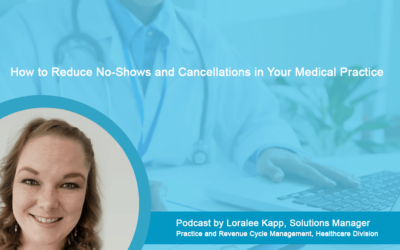An established medical billing and coding company based in the United States, Outsource Strategies International (OSI) serves diverse medical specialties.
In today’s podcast, Natalie Tornese, one of our Senior Solutions Managers, discusses some important points about Pharmacy Prior Authorization.
Read Transcript
Hello everyone and Welcome to our Podcast series. My name is Natalie Tornese and I am a Senior Solutions Manager at Outsource Strategies.
I wanted to talk a little bit about Prior Authorizations. As I talk about this topic I may use PA as an abbreviated way to say prior authorizations. So that’s what I mean when I refer to it as a PA.
A December 2017 study from the AMA reported that 86 percent of physicians said that prior authorizations have increased during the prior five years, with 51 percent saying that they have increased significantly. The PA process for approval of high-cost specialty medications is a bear, and costs pharmacies and physicians’ practices a lot in terms of time and money.
So, what is a prior authorization?
Prior authorization (PA) is a requirement that healthcare providers obtain advance approval from an insurance plan before a specific medication is delivered to the patient to qualify for payment coverage.
Health insurance companies use a PA as a means to ensure that a drug prescribed is truly medically necessary and appropriate for the patient’s situation. It is a method for minimizing costs by ensuring that the prescribed drug is the most economical treatment option available to treat the condition. For example, if the patient is prescribed an expensive drug, the insurance company may authorize it only if the physician can show that it is a better option than a less expensive medication for the condition.
What types of drugs require PAs?
According to Consumer Affairs, the following kinds of drugs are subject to a prior authorization –
- Brand name medicines that are available in a generic form
- Expensive medications, such as those needed for psoriasis or rheumatoid arthritis
- Drugs used for cosmetic reasons such as medications used to treat facial wrinkling
- Drugs prescribed to treat a non-life threatening medical condition
- Drugs not usually covered by the insurance company, but said to be medically necessary by the prescriber
- And drugs that are usually covered by the insurance company but are being used at doses higher than normal
Blue Cross Blue Shield specifically requires prior auth for medications:
- that have dangerous side effects
- are harmful when combined with other drugs
- should be used only for certain health conditions
- that are often misused or abused
- are prescribed when less expensive drugs may work better
What are the steps involved in the pharmacy prior authorization process?
The physician prescribes a specific drug. If the person requires a PA, the pharmacy will contact the physician who prescribed the medication and inform the provider that the insurance company requires a PA. At this stage, the patient can either opt to wait for coverage approval from the insurance company or pay for full cost of the prescription themselves. The physician will contact the insurance company and submit a formal authorization request according to the plan’s guidelines, along with all necessary forms. The insurance company may also require the patient to complete some paperwork and sign some forms. The insurance company will review the request and may either authorize the drug or refuse to cover it.
So, what are the common reasons why a patient’s prior auth request may not be approved?
- Well, the patient did not give the insurance company, physician or pharmacy enough time to complete the needed steps, which can take several business days
- The insurance company denied the claim
- The insurance information was outdated or the claim was sent to the wrong insurance company
- The medication was not medically necessary
- Supporting evidence was inadequate
- The physician’s practice did not contact the insurance company for the prior approval
- The wrong prior authorization code was used to bill the medication
- The payer’s rules have changed
- The practices does not have the capability to manage prior authorizations
- The physician did not meet the payer guidelines
As you can see, that there are lots of reasons why a prior auth request may not be approved. In some cases, the approval of the drug may be valid for a limited time such as one year or one month. In such cases, you have to restart the authorization process over again if that time is gone by.
How long does the prior authorization take?
Well, it is time consuming for physicians and their staff. A 2010 AMA survey found that physicians spend about 20 hours of a traditional work week on PA activities. They also reported that more than 60% of physicians said they need to wait at least one business day to complete prior authorizations, while 30% said they had to at least wait three business days or longer to get a response on the request. Further delays can occur if coverage is denied and must be appealed and an appeal can take several days to process.
So if a patient believes that their pharmacy PA was incorrectly denied, they can appeal the rejected claim. They would need to first contact the insurance company and ask why the claim was denied. If the insurance company indicates a billing error or missing information, patients can work with their physician to review the paperwork and fix any errors that caused the denial. They can also ask the physician to provide backup evidence or notes that can help prove that the prescription is medically necessary. The chances of success in resolving a prior authorization denial are higher when the physician ensures that all clinical information is included with the appeal, including any data that may have been missed from the initial request.
I hope this helps, but always remember that documentation and a thorough knowledge of payer regulations and guidelines is critical to ensure accurate reimbursement for the procedures performed.



